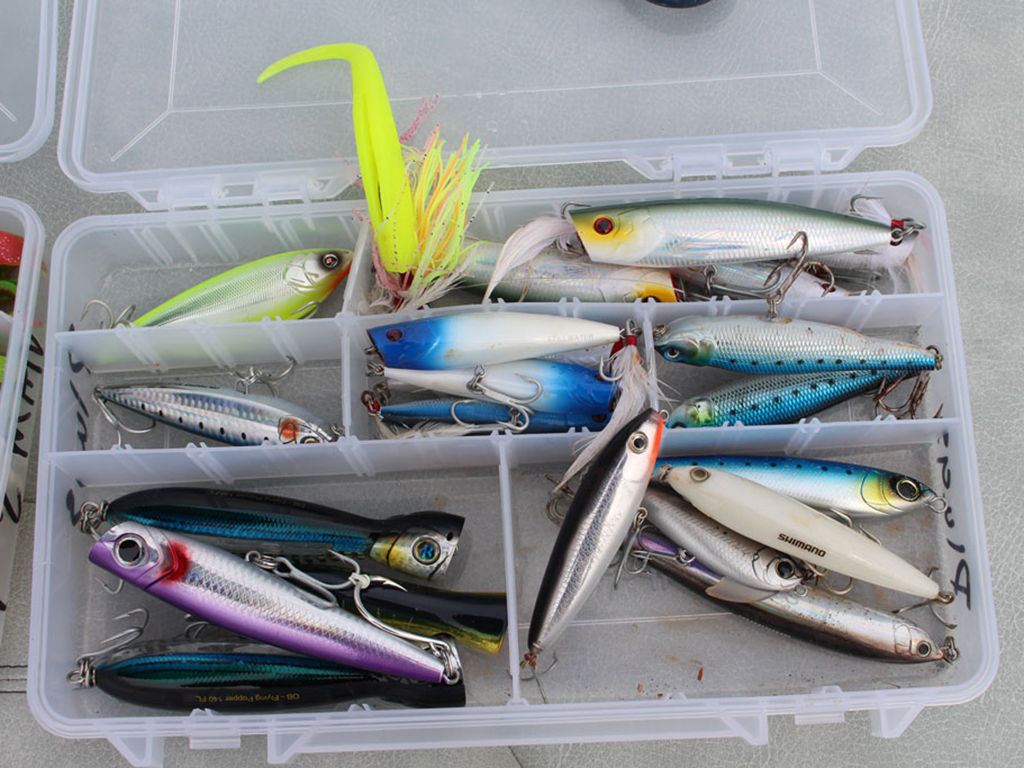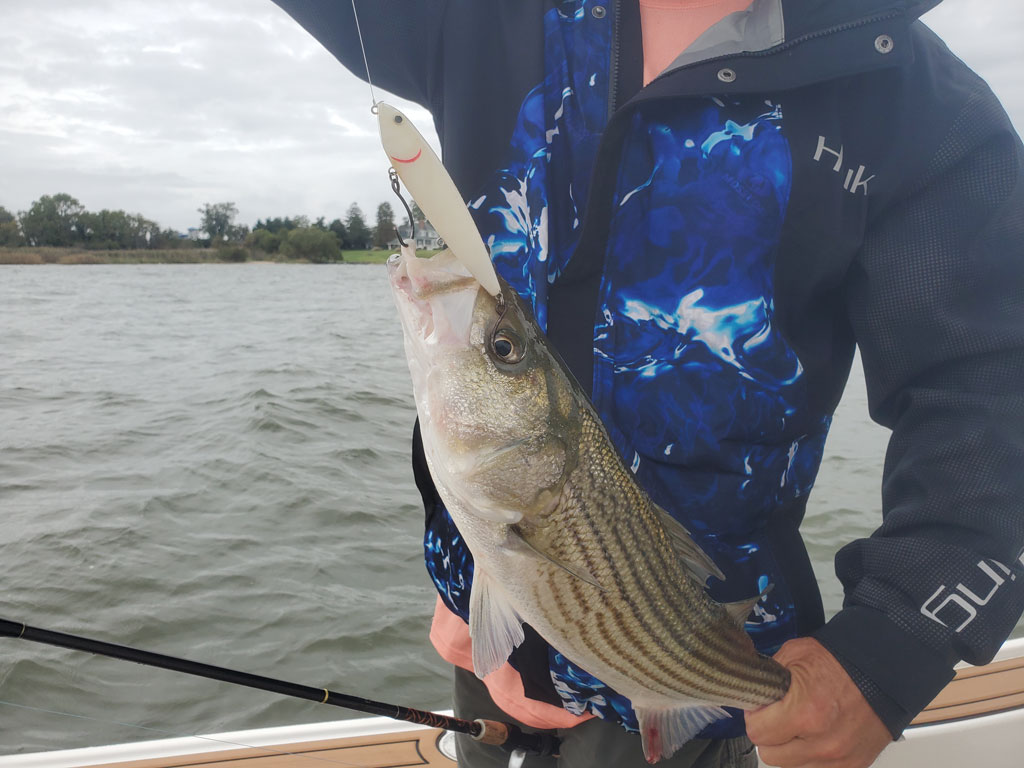Nothing beats the explosive strikes of topwater fishing. That’s why “walking the dog” is a tactic every angler needs to know. If you learn how to fish topwater, you’ll be treated to adrenaline-inducing surface explosions and epic battles with everything from Bull Redfish and Seatrout in the mangroves to sweet-water Bass.

However, like many forms of fishing, while working a topwater lure in the most basic form is simple, swimming it in the ideal fish-tempting manner is something of an art. You say you want to enjoy the thrill of epic topwater eruptions and plug-smashing strikes? Getting your lure to zig-zag across the surface by using a walk-the-dog retrieve is often the best way to make it happen. Let’s take a close look at walking the dog – from the fundamentals to the fine details.
Choosing Topwater Lures for Walking the Dog
Topwater lures can be broken down into floating stick baits (commonly called “spooks”), poppers and chuggers, and prop baits.

If it’s rough out and there are lots of waves, most anglers reach for poppers and chuggers since they can call in fish from afar when there’s lots of background noise.
Prop-baits – sometimes those with a prop of sorts on the back are called “ploppers” – are also a good choice when you need to attract attention, and are ideal for rank beginners. They provide their own fish-calling action without any added input from the angler.
But in relatively calm conditions and especially when there’s low light at sunrise, sunset, or in heavy cloud cover, it’s rare for anything to beat a topwater lure fished across the surface with a zigging, zagging, walk-the-dog retrieve. Only spooks provide the ideal zig-zag!
There are a million and one variations of this lure on the market. The key factors to bear in mind when choosing which to throw are size, weight, and color.

For size, you’ll want to match your choice to the size of the prevalent bait fish. Most options are in the 4–6-inch range, but there are also plenty of 3-inchers and 8-inchers. These lures are built with different densities, so larger does not always mean heavier! Having a bit more heft in a plug means you can sling it farther, but lighter spooks tend to be easier to walk with the ideal zig-zagging motion.
As for color, white, chartreuse, clear, and black (for night or super-low-light conditions) are usually best. And in most cases, those fancy finishes and color patterns on the lure’s sides and back are irrelevant because the fish is looking up from below and only sees the bottom of the lure. But as we all know, lures are made to attract anglers every bit as much as they’re made to attract fish!
How to Walk the Dog
The basic motion used to walk the dog is a simple rhythmic pumping of the rod tip. Cast out and, after the lure lands, wait for several seconds. It’s not uncommon for a fish to attack right off the bat if the topwater lure lands in a good spot. Then, point your rod tip at the lure and reel in any slack.

Now, keep the rod tip low – you want the line to remain in the water, not suspended above it – while sweeping it back a foot or two (parallel to the water’s surface), and begin to crank on the reel. Constantly pump the rod as you reel in slack line. Each time you pull back on the rod, the lure will dart to one side. The next time you pump it, the lure will go the other way, causing it to zig-zag along the surface.
A steady zig-zag is what we’re going for. At first, you’ll likely get a few zigs and a couple of zags. But for much of the retrieve, the lure will pull straight through the water. This is where things get tricky. You need to regulate the speed, frequency, and force of your rod tip pumps, along with how fast you crank the reel. When you get the ideal mix of all these factors, the lure will zig-zag from the moment you begin retrieving it to the moment you lift it out of the water – or a fish attacks.
Advanced Tips for Walking the Dog

Don’t worry if your zigging and zagging seems sub-par at first (it almost certainly will)! Learning how to walk the dog takes practice. But the more you try it, the better you’ll get. And as your retrieves become better, use these tips to catch more fish:
- Don’t jerk back instantly on the blow-up. When a fish explodes on a topwater lure, it’s all too easy to yank the lure right out of the fish’s mouth. Instead, drop the rod tip towards the fish, wait for about one second, and then set the hook. That little pause will cause your strike-to-hookup ratio to soar.
- Sometimes maintaining a steady pace works best, and other times a few zig-zags followed by a pause will work best. Fish can change their preferences on a day-to-day basis, so try both styles until you get a few bites and then stick with it. The same goes when it comes to the speed of your retrieve.
- Experiment until you ID what the fish want at any given time. Some anglers advise that you pause after missed strikes, while others say it’s best to keep the lure moving. In reality, both can generate follow-up strikes.
- If there seems to be too much slack in the line when you pump your rod, reel faster. But if the zig-zag motion is lackluster, try reeling slower.
- Choose a rod with a medium or slow action for walking the dog. Some extra spring in the tip makes it a lot easier to keep slack out of the line as you walk the dog and helps prevent the lure from jumping out of the water. Choosing monofilament as opposed to braid helps, too.
Topwater Walking the Dog: Elevate Your Fishing!

Remember, it will take some time and practice to get that lure zigging and zagging just right. But trust me, making the effort to learn how to walk the dog is worth it. You’ll agree the first time you feel that jolt of adrenaline as fish blasts that spook to smithereens! And there’s a good chance you’ll become forever addicted to topwater fishing…
Are you a keen topwater fisher? How do you “walk the dog”? Let us know all your tips and tricks in the comments below!
The post How to Go Topwater Fishing: An Expert’s Guide to “Walking the Dog” appeared first on FishingBooker Blog.
https://fishingbooker-prod-blog-backup.s3.amazonaws.com/blog/media/2024/09/13131630/speckled-trout-topwater-lure.jpg
0 Comments
Enregistrer un commentaire